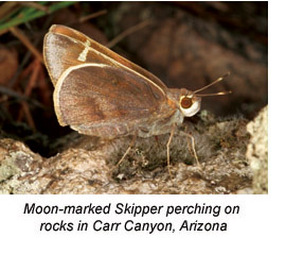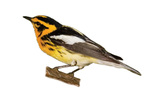Working on the Butterflies guide: a personal reflection from Kenn Kaufman

“As soon as the KFG to Birds was finished (in summer 2000), before it was even published, we started working on the Butterflies guide. For me, it was a profoundly different experience from working on Birds. During the bird guide project I was learning a lot about digital graphics, layout, and design, but not much about birds themselves, because I’d been studying birds intensively for years. With butterflies, I went back almost to the stage of a beginner.
“Butterflies had captured my imagination when I was about 13, after I had already been birding for seven years, and I had maintained an interest ever since. Traveling around North America, I had always tried to find and identify new butterflies, at least in a casual way. But in the mid-1990s, while I was living in Tucson, I had picked up this great little book called Butterflies of Southeastern Arizona, by Rich Bailowitz and Jim Brock. This book had such detailed information that it inspired me to go out and start trying to find more of the rare and challenging butterfly species. Then I discovered a remarkable coincidence. One of the authors, Jim Brock, lived on my street – literally three houses away! We had even seen each other in passing, but neither of us had realized that the other was an obsessed field naturalist.
“After this chance discovery, I enjoyed many trips into the field with Jim. Southeastern Arizona is blessed with a rich variety of butterfly species, and Jim knew where to look for all of them. It was astounding to watch him in action. A dingy little butterfly would flit past, a hundred yards away, and he would say, “That looked like a Moon-marked Skipper.” We would hike up the canyon to find it, and invariably find that he was right. When we pursued butterflies in other regions, like Texas and Mexico, his field skills were similarly awesome. But Jim is so modest about his own abilities that I really had to work at it to talk him into coauthoring the Butterflies field guide.
"Because I had been an intense birder all my life, it was tempting to treat butterflies as if they were just a different category of birds. But of course, they're very different, and pursuing them is different from birding. For one thing, it's hard to get used to the difference in seasonality. Birds are always somewhere -- if we're not seeing them here, it means they've flown off to some other place, but they still exist as adult birds somewhere on the planet. With butterflies, the adult stage is just one small part of the life cycle, and adults may be on the wing for only a few weeks out of the year: The rest of the time, the species exists only as eggs, larvae (caterpillars), or pupae. If we miss their brief flight period, we may have to wait a full year to look for the adults flying again."
“Butterflies had captured my imagination when I was about 13, after I had already been birding for seven years, and I had maintained an interest ever since. Traveling around North America, I had always tried to find and identify new butterflies, at least in a casual way. But in the mid-1990s, while I was living in Tucson, I had picked up this great little book called Butterflies of Southeastern Arizona, by Rich Bailowitz and Jim Brock. This book had such detailed information that it inspired me to go out and start trying to find more of the rare and challenging butterfly species. Then I discovered a remarkable coincidence. One of the authors, Jim Brock, lived on my street – literally three houses away! We had even seen each other in passing, but neither of us had realized that the other was an obsessed field naturalist.
“After this chance discovery, I enjoyed many trips into the field with Jim. Southeastern Arizona is blessed with a rich variety of butterfly species, and Jim knew where to look for all of them. It was astounding to watch him in action. A dingy little butterfly would flit past, a hundred yards away, and he would say, “That looked like a Moon-marked Skipper.” We would hike up the canyon to find it, and invariably find that he was right. When we pursued butterflies in other regions, like Texas and Mexico, his field skills were similarly awesome. But Jim is so modest about his own abilities that I really had to work at it to talk him into coauthoring the Butterflies field guide.
"Because I had been an intense birder all my life, it was tempting to treat butterflies as if they were just a different category of birds. But of course, they're very different, and pursuing them is different from birding. For one thing, it's hard to get used to the difference in seasonality. Birds are always somewhere -- if we're not seeing them here, it means they've flown off to some other place, but they still exist as adult birds somewhere on the planet. With butterflies, the adult stage is just one small part of the life cycle, and adults may be on the wing for only a few weeks out of the year: The rest of the time, the species exists only as eggs, larvae (caterpillars), or pupae. If we miss their brief flight period, we may have to wait a full year to look for the adults flying again."

